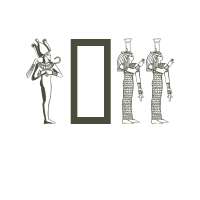

These typefaces, considered original and classic, later got their name because of the slight projections that finish off the main strokes of their letterforms, which are called serifs. There wasn’t much innovation and progress in type development until the 18th century when the first serif typefaces were created. It was created so that more letters could fit on a page in order to save money, while now it is used for emphasizing a word or a phrase. Shortly afterwards, italic-a slender and stylized version of roman, emerged.

The roman type consists of straight lines and regular curves, which makes it very clear and legible compared to blackletter. However, these letterforms seemed too dense when printed, which resulted with the birth of a new typeface called roman, created by Nicolas Jenson a century later. These are known as “blackletter” and greatly resemble handwritten calligraphy. The oldest typefaces date back to the 1400s when Johannes Gutenberg invented the printing press. This system of categories and subcategories can be very helpful when it comes to identifying, choosing, and combining typefaces. Typefaces can be classified based on various technical specifications of the lettering, but most often they are divided into these five categories based on their style: For example, Roboto is a typeface, while Roboto Black and Roboto Light are fonts. A lot of people use “typeface” and “font” as if they were synonyms, but, in fact, the term “typeface” is used for the overall design of the lettering, whereas a “font” is a variation of that design. Still, choosing the right typeface can sometimes seem a bit difficult and overwhelming, so the first step to overcoming those feelings is to learn the basics.įirst of all, it is important to use the correct terminology.

With that in mind, it would certainly feel dull and monotonous if all the text we come across everyday looked identical.įortunately, typeface designers throughout history have worked hard on creating and perfecting different letterforms, so now there is plenty to choose from. Typography has an immense effect on how we perceive and tell apart different designs. All designers should be aware of the importance of typography and the notable impact the chosen typeface has on their designs.


 0 kommentar(er)
0 kommentar(er)
